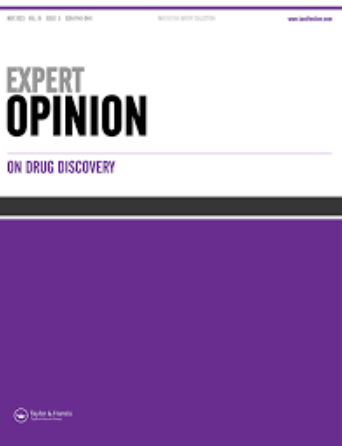Advances in the approaches used to repurpose drugs for neuroblastoma.
IF 6
2区 医学
Q1 PHARMACOLOGY & PHARMACY
引用次数: 0
Abstract
INTRODUCTION Neuroblastoma (NB) remains a challenging pediatric malignancy with limited treatment options, particularly for high-risk cases. Drug repurposing offers a convenient and cost-effective strategy for treating rare diseases like NB. Using existing drugs with known safety profiles accelerates the availability of new treatments, reduces development costs, and mitigates risks, offering hope for improved patient outcomes in challenging conditions. AREAS COVERED This review provides an overview of the advances in approaches used to repurpose drugs for NB therapy. The authors discuss strategies employed in drug repurposing, including computational and experimental methods, and rational drug design, highlighting key examples of repurposed drugs with promising clinical results. Additionally, the authors examine the challenges and opportunities associated with drug repurposing in NB and discuss future directions and potential areas for further research. EXPERT OPINION The fact that only one new drug has been approved in the last 30 years for the treatment of neuroblastoma plus a significant proportion of high-risk NB patients that remain uncurable, evidences the need for new fast and cost-effective alternatives. Drug repurposing may accelerate the treatment development process while reducing expenses and risks. This approach can swiftly bring effective NB therapies to market, enhancing survival rates and patient quality of life.神经母细胞瘤药物再利用方法的进展。
简介神经母细胞瘤(NB)仍然是一种具有挑战性的儿科恶性肿瘤,其治疗方案有限,尤其是对于高风险病例。药物再利用为治疗像神经母细胞瘤这样的罕见病提供了一种方便且具有成本效益的策略。使用已知安全性的现有药物可以加快新疗法的上市速度、降低开发成本并减轻风险,从而为改善具有挑战性疾病的患者预后带来希望。作者讨论了药物再利用所采用的策略,包括计算和实验方法以及合理的药物设计,重点介绍了临床效果良好的再利用药物的主要实例。此外,作者还探讨了与神经母细胞瘤药物再利用相关的挑战和机遇,并讨论了进一步研究的未来方向和潜在领域。专家观点在过去的 30 年中,仅有一种新药被批准用于治疗神经母细胞瘤,而相当一部分高危神经母细胞瘤患者仍无法治愈,这证明需要新的快速且具有成本效益的替代药物。药物再利用可加快治疗开发进程,同时降低费用和风险。这种方法可以迅速将有效的 NB 疗法推向市场,提高存活率和患者的生活质量。
本文章由计算机程序翻译,如有差异,请以英文原文为准。
求助全文
约1分钟内获得全文
求助全文
来源期刊
CiteScore
10.20
自引率
1.60%
发文量
78
审稿时长
6-12 weeks
期刊介绍:
Expert Opinion on Drug Discovery (ISSN 1746-0441 [print], 1746-045X [electronic]) is a MEDLINE-indexed, peer-reviewed, international journal publishing review articles on novel technologies involved in the drug discovery process, leading to new leads and reduced attrition rates. Each article is structured to incorporate the author’s own expert opinion on the scope for future development.
The Editors welcome:
Reviews covering chemoinformatics; bioinformatics; assay development; novel screening technologies; in vitro/in vivo models; structure-based drug design; systems biology
Drug Case Histories examining the steps involved in the preclinical and clinical development of a particular drug
The audience consists of scientists and managers in the healthcare and pharmaceutical industry, academic pharmaceutical scientists and other closely related professionals looking to enhance the success of their drug candidates through optimisation at the preclinical level.

 求助内容:
求助内容: 应助结果提醒方式:
应助结果提醒方式:


